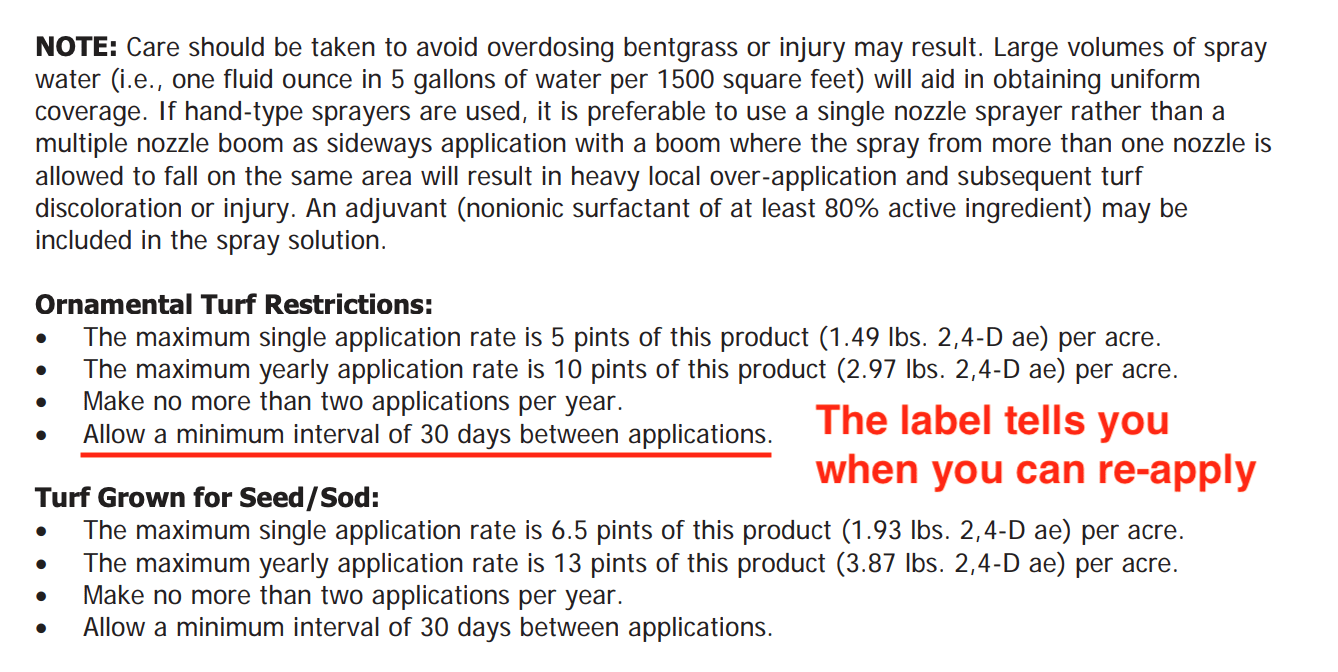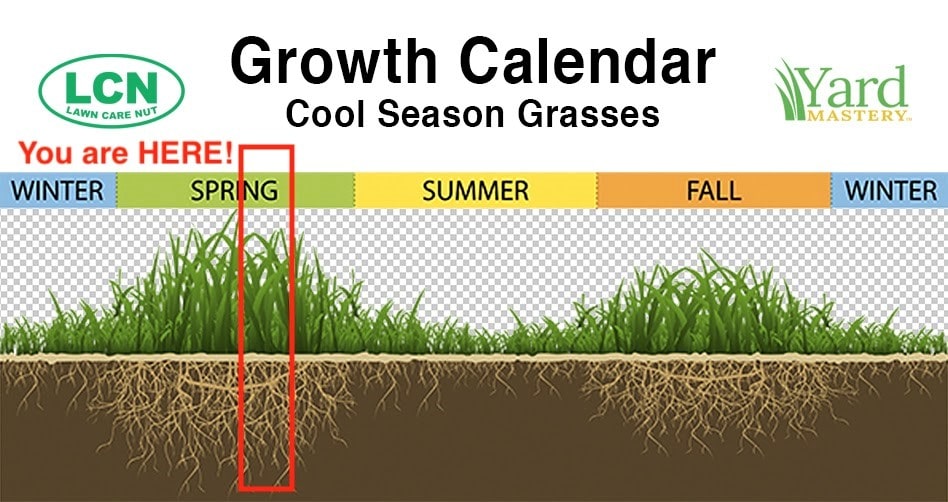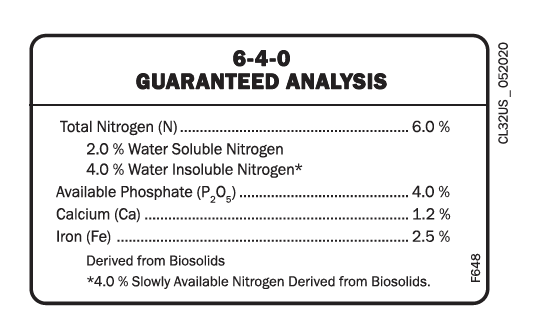Late April Lawn Care Tips for Cool-Season Lawns
- "The Lawn Care Nut"April 24, 2021
April is fast leaving us, and May will be here before you know it. I figured I’d come to you with some near-real-time tips that you can put into action this weekend and the focus today is for my friends with cool-season lawns who have been thrown a hard curveball this week.
Cool Season Lawns - Kentucky Bluegrass, Turf Type Tall Fescue, and Ryegrass
As I write this, folks across the midwest and into the North are actually getting dusted with snow. The good news there is that snow is really just severely slowed down cold rain and won't’ hurt the lawn in any way.
Of course, if you planted annual flowers in pots on the porch already, those may suffer some damage, but as far as your turf, it is patient. It will just wait for things to warm back up and continue on its spring push.
Weed Control in the Cold
One thing to consider though is weeds and spraying those weeds. If you had a sea of dandelions in your lawn that you sprayed prior to the cold snap, you will more than likely see poor results - at least poorer than expected.
This is because most post-emergent weed controls work systemically. They absorb into the plant and work their way down to the roots, killing as they go. Depending on the herbicide used, in ideal conditions, this can take a few days from stem to root for a total kill.
In order for that herbicide to travel that distance, the targeted weed, a dandelion, for example, must be actively growing. Its “juices” must be flowing both up and down the plant so the weed control is carried along. When temperatures dip, the weeds stop growing and the herbicides also stop moving inside. If they sit in this state for too long (sometimes only a few hours), the herbicide efficacy is reduced and when temps warm back up the dandelion can grow back out and shake off the weed control.

This is from the label of “Triad Select” - a post-emergent weed control used in cool-season lawns.
So if you sprayed prior to the cold snap, just keep an eye on things. Also, go and read the label on the product you applied for to find out what it tells you about re-application. Some weed controls allow you to apply again just 7 or 10 days later, others want you to wait 3 weeks or longer. Even if you think your weed control was rendered ineffective from the cold, you still must follow the label instructions on re-application so go read all the fine print so you are ready when and if the time comes.
Fertilizer Applications
Enough about the cold! By the time you read this post, the cold snap will be gone, temps will have warmed up, and you’ll be back on the growth track. The thing about cool-season lawns is that they love to grow fast and furious in springtime. There is only a small window of time that is ideal for them and it’s springtime.
In winter it’s cold and they are dormant - but also the days are very short and a good majority of you have gray days with little to no sunlight. This isn’t ideal for turfgrass.

On the other hand, summer also is hard on your turf. Temperatures over 85F with very long sunny days can tax it too far to the other extreme. If you get a stretch of days over 90F your cool-season turf, especially Kentucky Bluegrass is going to want to check into dormancy to protect itself.
Your turf is smart and knows the time it has sandwiched between winter and summer is short - so it grows like crazy packing on roots and top growth in prep for the long summer ahead.
This is the time to feed it what it needs. Nitrogen! Milorganite being a naturally slow-release nitrogen product is excellent for these later spring applications. But not just for the nitrogen, did you know that Milo also has 1.2% calcium in its analysis?
 Calcium is a macronutrient needed by grass plants, but it's a secondary macronutrient nutrient and doesn’t get talked about much. Everyone knows about the big 3, Nitrogen, Phosphorous, and Potassium but many casual lawn enthusiasts rarely think about Calcium.
Calcium is a macronutrient needed by grass plants, but it's a secondary macronutrient nutrient and doesn’t get talked about much. Everyone knows about the big 3, Nitrogen, Phosphorous, and Potassium but many casual lawn enthusiasts rarely think about Calcium.
Do you remember when you were a kid and your mom told you to drink milk because it had calcium that would build strong bones? I remember that, and I also remember commercials in the 1990s talking about osteoporosis. That made me drink a lot of milk back then, mainly for calcium.
Well just as calcium helps with strong bones in humans, it helps with strong root structure in your turf. Calcium’s primary job is to strengthen cell walls. It also helps with the development of new growth (cell division) and aids in transpiration.
Need calcium for your lawn? Apply some Milorganite!
Of course, it also has iron and we love that because iron is what makes grass that deeper darker blue-green color. But did you know that the iron in Milo is “chelated?”
This word is pronounced “Key-lated” and basically, it means the iron is more readily available to the plant. Some forms of iron can get locked up in soil but not the iron in Milo. It’s ready to go quick which means in the warmer weather of late spring along with some spring rain, you may see results within days.
Seed Heads in the Lawn
The last thing I want to touch on today is probably the most important. It’s important not because it’s something that is going to hurt your lawn, or because it’s something you need to apply to make it healthier. Instead, this advice is going to save you from worry and anxiety. Watch this video:
This time of year, cool-season grasses will develop seed heads and the emails start flowing into me from folks wondering “What is this weed growing in my lawn all of the sudden?.”
Remember how I told you that your cool-season turf really puts in work during this short window of time in spring? Well, part of that work is reproduction which means it sends up seed heads in late April and early May.
This is good and bad, but mostly good.
It’s good because it’s your lawn’s way of telling you “I am very healthy. In fact, I’m so healthy I have energy to put into reproduction so I’m going to send up some seed stalks!”
The thing to know is that this seed is sterile. Today’s grass cultivars are bred to be sterile so recycling those seeds back into the lawn will not help to thicken it up. Even if they were viable, you’d have to let the lawn grow tall and long until those seeds turned brown and dropped naturally. This would be several weeks and none of us want to wait that long to mow. Plus, your homeowners' association would probably send you a notice.
However, those green seeds should still be recycled back into the lawn. When seed heads are present you for sure want to be mulching your clippings when you mow. Those seed heads are full of nutrients that you want to be returned to your soil.
The only bad part about all this is the look. The seed heads appear lighter green or even white in the lawn and the stalks they grow on are thick and stiff. They do not cut cleanly so your lawn will look pretty bad for a couple of weeks while you are mowing them off. If you want to reduce the seed production time in the lawn, you can mow every 3-4 days. This will pretty much tell the lawn to quit trying to reproduce and go back to normal.
So there you go my cool-season friends! I hope your season has been successful thus far and you are enjoying the mow as often as you can! In my next post, I’m going to make a video showing you how to apply Milorganite using a Scotts spreader. This way you can get an application down on Derby Day or Memorial Day and sit back and smell the success with friends and family!

